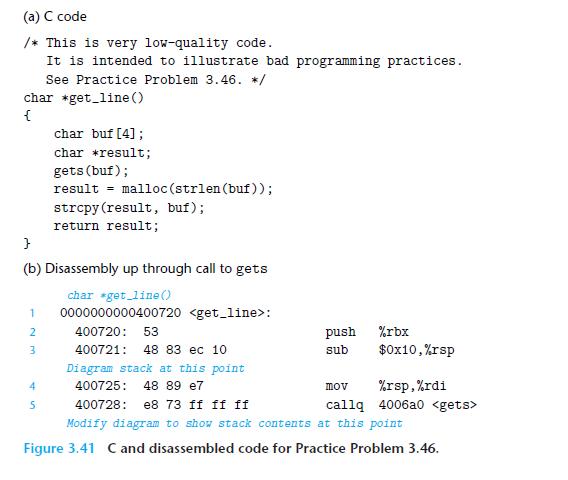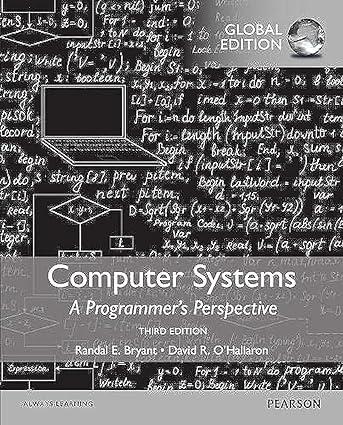Figure 3.41 shows a (low-quality) implementation of a function that reads a line from standard input, copies
Question:
Figure 3.41 shows a (low-quality) implementation of a function that reads a line from standard input, copies the string to newly allocated storage, and returns a pointer to the result. Consider the following scenario. Procedure get_line is called with the return address equal to 0x400776 and register %rbx equal to 0x0123456789ABCDEF. You type in the string 0123456789012345678901234

The program terminates with a segmentation fault. You run gdb and determine that the error occurs during the execution of the ret instruction of get_line.
A. Fill in the diagram that follows, indicating as much as you can about the stack just after executing the instruction at line 3 in the disassembly. Label the quantities stored on the stack (e.g., “Return address”) on the right, and their hexadecimal values (if known) within the box. Each box represents 8 bytes. Indicate the position of %rsp. Recall that the ASCII codes for characters 0–9
are 0x30–0x39.

B. Modify your diagram to show the effect of the call to gets (line 5).
C. To what address does the program attempt to return?
D. What register(s) have corrupted value(s) when get_line returns?
E. Besides the potential for buffer overflow, what two other things are wrong with the code for get_line?
Step by Step Answer:

Computer Systems A Programmers Perspective
ISBN: 9781292101767
3rd Global Edition
Authors: Randal E. Bryant, David R. O'Hallaron





